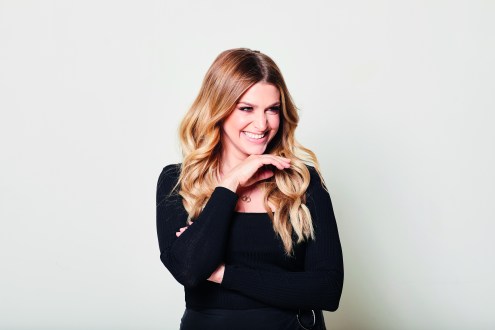Beat the gym guilt
We start a fitness regime with good intentions, but for many of us there can come a point where the call of the couch is stronger than the lure of putting on trainers. Catherine Turner searches for a mindset that will help us integrate exercise into our lives for good.

Find yourself coming up with excuses for not exercising, even when you know you should? It takes an iron will to ignore those resistant voices in your head. But have you ever regretted going once you’re done?
If we know it’s good for us, why choose the easier option – to stay in and watch a box set instead? ‘It’s not our fault,’ says Dr Victor Thompson, clinical sports psychologist. ‘There is an evolutionary process going on here. For us, 21st-century life is easy; we don’t have to forage for food but doing the minimum is at odds with our belief that we should be constantly pushing ourselves and running around in our fast-paced lives.’ Understanding that we’re naturally programmed to make exercise excuses means we can begin to rationalise and override them. ‘Instead of criticising yourself for wanting to take it easy, ask yourself why you would want to move more,’ suggests Dr Thompson. ‘None of us are lazy in doing things we want to,’ says Carl Wilson of The Third Space gym in London. ‘The gym is an uninteresting place for lots of people and that’s understandable, but feeling good while moving is something everyone can appreciate.’
Choosing to exercise is simply a decision we can make. Here are our tips on beating the gym guilt:
1. Let go of the external – Fitness has become an industry so tied into the diet phenomenon that it influences us to place too much emphasis on the outer self. ‘Those who train to look good and lose weight over the other health benefits of exercise can see their entire programme as a failure if the weight loss is not achieved,’ says Price. In other words, we get trapped into cycles of failure and guilt. The fact is, obesity has become a global epidemic and weight loss can be beneficial to our health long-term. But the number on the scale isn’t everything. We should try to tap into how we feel too, advises Wilson. ‘Notice the positive feeling you have post-workout and the difference when you don’t. This reinforces the idea that training is predominantly a cognitive activity and the body just does what the brain tells it to. You’ll start to feel it more during the workout, so eventually you enjoy the movement itself and it becomes an intrinsically rewarding experience. Taking mirrors out of gyms would be ideal, but I’m not holding my breath!’
2. Exercise your emotions – Acknowledging your triggers is vital in getting and staying fit. It can be what gets you started, says Nahid de Belgonne, founder and director of Good Vibes Fitness Studio. ‘I’ve always had emotional triggers that influenced a particular exercise routine. I took up running when I wanted to leave home, martial arts when I left my first husband and yoga when I left a “big” job.’ Equally, understanding the emotions behind why we’re not exercising will be revelatory. ‘Many clients carry a delicate, deep seated guilt driven by fear of failure if they’re not doing things perfectly, ending in them doing nothing,’ says Tim Weeks. What you’re feeling and what might be holding you back is very individual. ‘We need to look inwardly, and start to visualise ourselves – where we are at – not anyone in the media or around us. It takes a lot of soul searching and one of the best tools is writing down your thoughts and feelings on a day-to-day basis’, says Christine Elvin, counsellor and sports mind therapist. ‘Most of my clients find they want to do the work because they enjoy learning about themselves and eventually something clicks to make the change.’
3. Move the goal posts – Setting goals is one of the obvious motivators, but there must be a delicate balance between having something to aim for and setting yourself up for failure, as Price explains. ‘Often we take on other people’s ambitions so there is pressure to set a goal when there doesn’t need to be. Fixing a target that is unsustainable can lead to doing nothing. Plus when you have very dynamic goals, it sets it up a feeling of not wanting to do anything afterwards. The way you get fitter is by shifting your base level up. For a lot of my clients, it is about improving overall health to enhance their quality of life. Extreme aims can actually decrease this.’
4. Go easy on yourself – The guilt/fear of failure trap mentioned earlier can act out as us bouncing from one extreme to the other. We ‘fail’ at one effort to get fit, give up, then launch ourselves into another more punishing regime, losing confidence along the way. The trick is to build up slowly, Weeks says. ‘It’s all about self-discovery so you build confidence,’ he points out. ‘For example, if I am training someone to run, I always get them to walk first – if you walk first, break into a jog, stop before you’re tired, you learn that it’s easy, and start to believe you can do it.’ Building confidence means we can begin to trust ourselves and make fitness an everyday thing. Try the 80/20 rule advocated by Weeks. Be more compassionate and understand that relaxation is as important as the action, so keep on track 80 per cent of the time and for the other 20 per cent, relax.
5. Try on the trends – We’re constantly bombarded with ways to get fit – and while it’s healthy to be cynical about fads, it is good to try something new. At the moment, there are glowing scientific reports on the benefits of High Intensity Interval Training (HIIT). Opt for classes that use the HIIT template of switching from low intensity to high intensity training and back again. Spinning is a perfect example of this and new versions – from SoulCycle to aqua spinning – are popping up everywhere. Ultimately, variety is key. ‘Your body needs to do different things – cross train as much as you can and include strength, cardio, flexibility, and something like yoga to balance the nervous system,’ says de Belgeonne, whose Good Vibes studios offers a wide variety of classes from spinning, Power Plate to a wide range of yoga classes. Sounds like a good plan.
6. Get with a group – Classes in general are a great way to lift your energy and confidence levels. ‘Olympic athletes surround themselves with a team so they feel loved and cared for, and classes can re-create that feeling,’ says Weeks. If not classes, make friends at the gym and suggest training together, says Stephen Price. ‘Small group coaching of around three to four people is growing in momentum. It has been proven to be the most effective form of training, because there is some accountability but at the same time each individual has a personalised programme so not everyone is doing the same thing. The power of the group is a wonderful thing.’
Contacts: Dr Victor Thompson, clinical sports psychologist, sportspsychologist.com / Carl Wilson, personal training instructor, The Third Space, thetheirdspace.com / Stephen Price, founder of SP&Co fitness training, spandco.co.uk / Tim Weeks, programme director, Psycle, psyclelondon.com / Nahid de Belgonne, founder and director of Good Vibes Fitness Studio, goodvibesfitness.co.uk / Christine Elvin, counsellor and sports mind therapist, christineelvin.com
–








